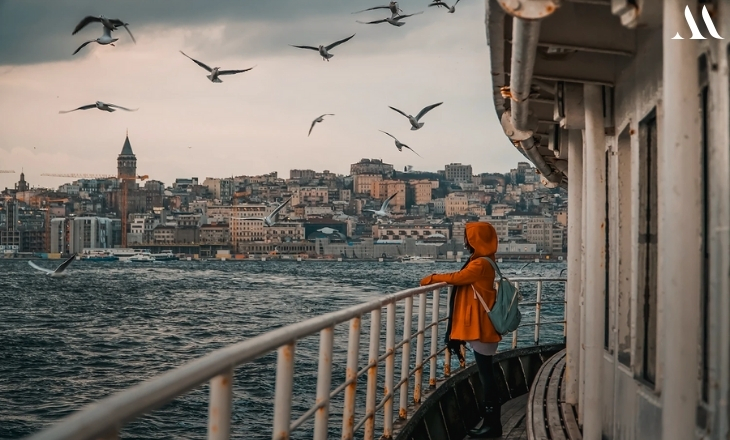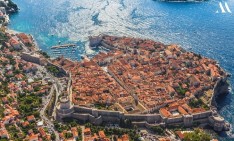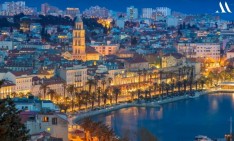Amorphous(adv): having no definite form.
That which is formless and free-flowing and doesn’t conform to boundaries.
| "On the meeting point of two worlds, the ornament of Turkish homeland, the treasure of Turkish history, the city cherished by the Turkish nation, İstanbul, has its place in the hearts of all citizens." - Mustafa Kemal Atatürk |
Antiquity steeped in the modern metropolis- a gem like Istanbul is rare in common. Just like a gem on display, all come to see, but only wise travellers look underneath the surface to appreciate the pressure it endured and became a prized treasure. To understand this city, you have to go back in history, and history has been all kinds of cruel and kind to this unique city called Istanbul.
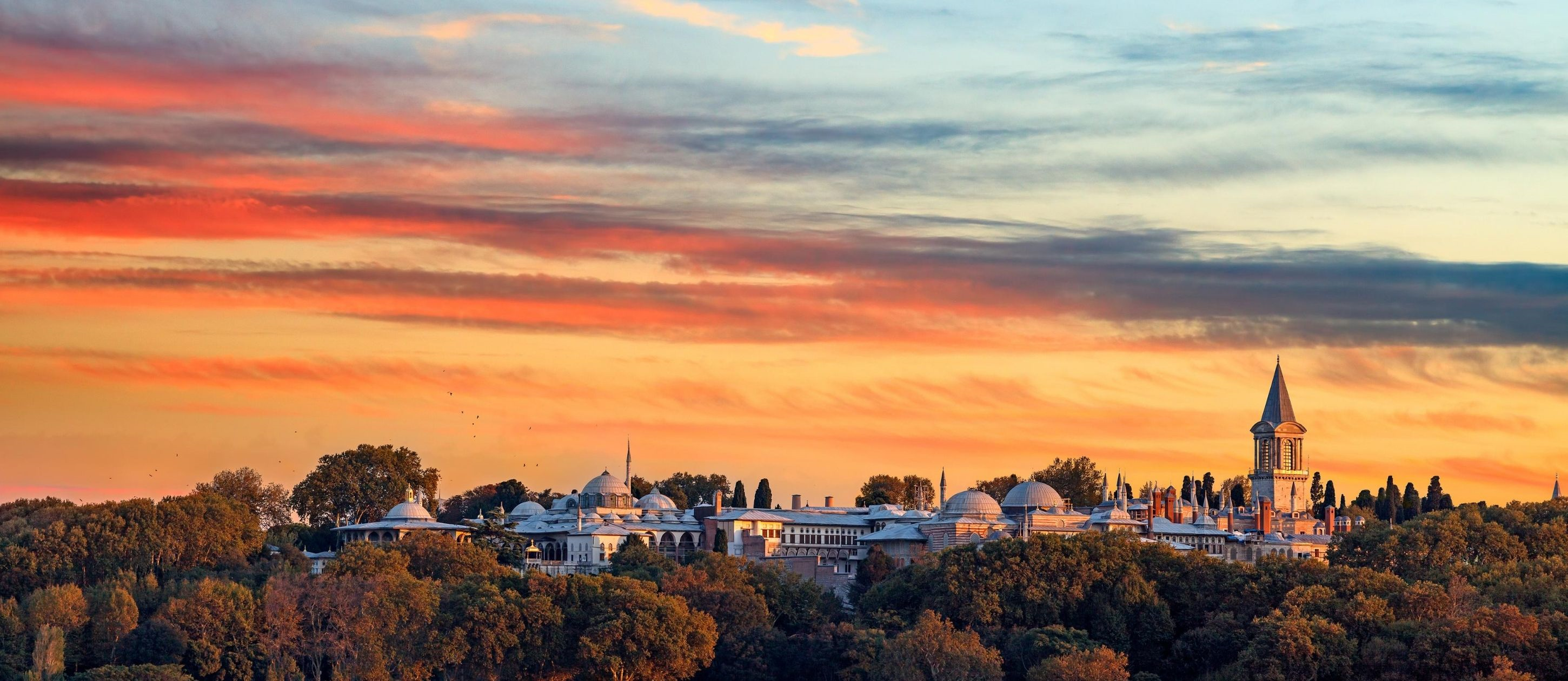
Becoming Istanbul |
The first settlement and what followed in history are full of intrigues and sieges. It was one of the most coveted cities in the world and saw numerous battles as imperial powers vied for control. Byzas claimed the city in the 7th century BC, calling it Byzantium, until the Persians arrived, only to be overtaken by Alexander the Great by the 4th century BC. After a few centuries of relative peace, the city was conquered by the Roman Emperor Septimius Severus in the 2nd century AD. In the 4th century, Emperor Constantine the Great made Byzantium the capital of the entire Roman Empire and renamed it Constantinople. Between the 4th and 6th centuries, Byzantine rulers filled their city with the riches of the ancient world.
In 532, under the reign of Justinian I, riots devastated the city, but Constantinople was rebuilt, and extraordinary monuments, such as the Hagia Sophia, stand as testaments to the golden age of the Byzantines. In the 7th and 8th centuries, Arabs claimed the city for themselves, followed by the Barbarians in the 9th and 10th centuries. However, a crippling blow came with the Fourth Crusade’s rule from 1204 to 1261, when the city was ravaged, its wonders destroyed, and its wealth looted. After this devastation, Constantinople never regained its former riches and power.
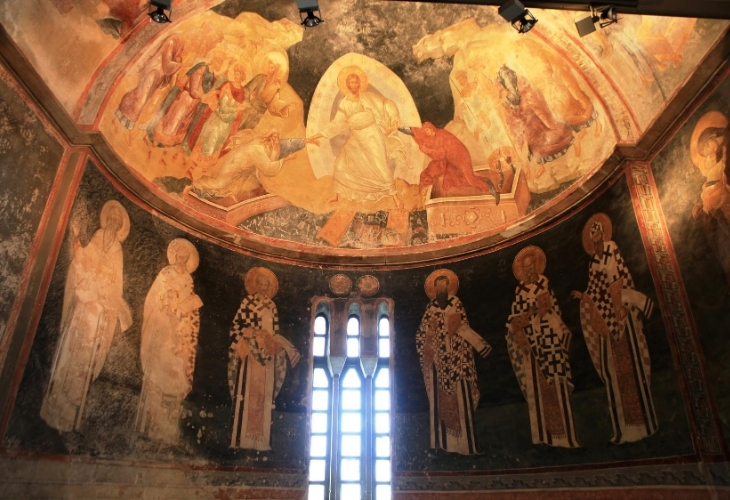
When Ottoman Turks conquered, led by Sultan Mehmet II in1453, he renamed the city Islambol, and thus, it became the capital of the Ottoman Empire. Between the 15th and 16th centuries, sultans erected many mosques and public structures, increasing the population again by around half a million by the mid-1500s, making Istanbul a critical and strategic cultural, political, and trade center. For thousands of centuries, Istanbul has stood the test of time, sometimes as a barrier and sometimes as a bridge, witnessing the confluence of religion, culture, art, imperial reigns, and visions of great leaders.
| “... haste can do nothing with these hills. I knew when I had looked for a long time that I had hardly begun to see.” ― Nan Shepherd, The Living Mountain |
Take your time while traveling. To have the best trip possible, staying relaxed and open to the experience is important. During the days you'll spend in Istanbul, immerse yourself in the culture—read novels and poetry, watch films, and explore local fashion and cookery channels. Tune into the news channel from time to time as you come and go from your hotel room. You may not understand everything you see and hear, but your senses will absorb the essence of the place, opening doors to deeper insights on a surreal level.
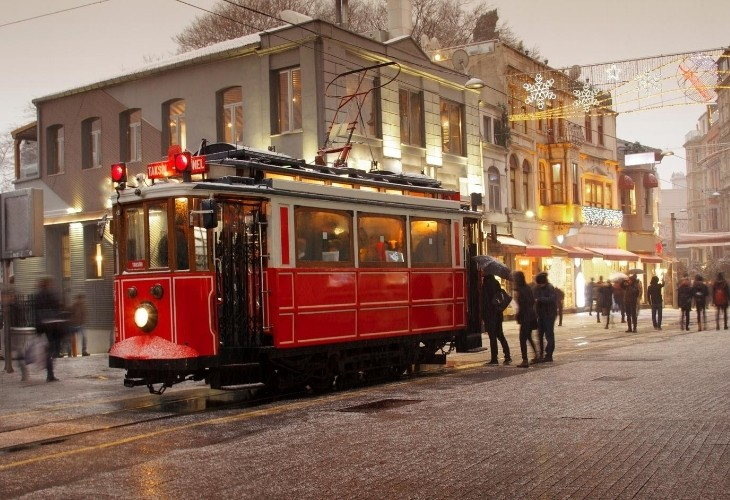
Every morning, I got up with quiet energy around me, ready to leave my hotel and go in any one direction. Some days, I traveled as far as 6 kilometers to see whatever there was to see in between. With the most important spots closely connected, it became easy to move about. When planning a trip, you cannot think of the things you will see between your walk or your transportation from the airport to the hotel or from the hotel to an attraction. While anticipating a trip, we cannot imagine the people we will encounter and the little incidents that will happen, like a stranger picking up your bag for you or a helping hand from someone else while disembarking the ferry. The sights you will come across are the neighborhoods where people go about their lives, a woman speaking to her children while another woman sits at a corner, having seen the better part of her life. A man is in discussion with buyers about his fruits. Passing these scenes makes our time in these places all the more real, and that infuses life in our imagination of the country.
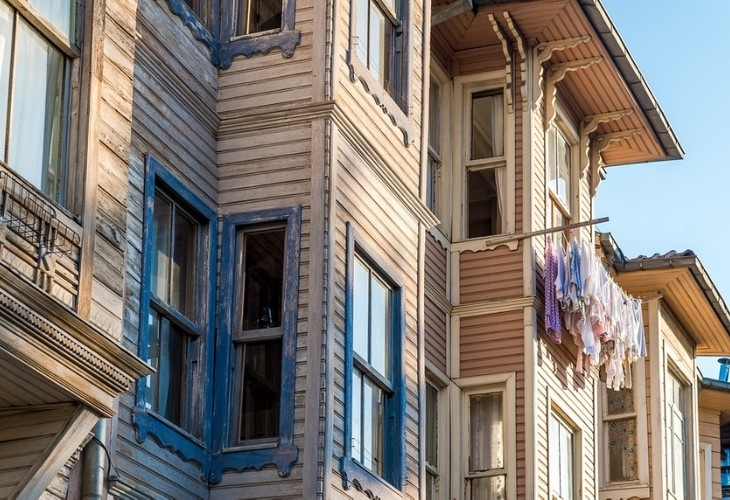
The Locality |
Istanbul is a place flooded with generally lovely and compassionate people. Most are extremely friendly to tourists and encourage them to explore their country better. They take their time explaining things and feel pretty pleased about it, too, making it evident that the sense of hospitality is deeply ingrained in them.
From a traveler’s point of view, people in Istanbul go about their day taking care of anyone they come across. They also cannot stand a helpless cat or dog. Turkey is known for its caretaking attributes regarding stray animals; many feed them daily or immunize them just the same.
Common in Istanbul are men holding conversations over their famous Turkish tea. Discussions about politics and topics from around the country aren’t rare, and the locals often get involved. In a country where the old and new are mixed, places in Istanbul range from quiet to extremely noisy with all the hustle and bustle in the world. For instance, the Talimhane district near Taksim Square is fairly quiet, with 3 to 4-star hotels. On the other hand, however, the modern side of Istanbul in Galata is a highly vibrant neighborhood full of energy.
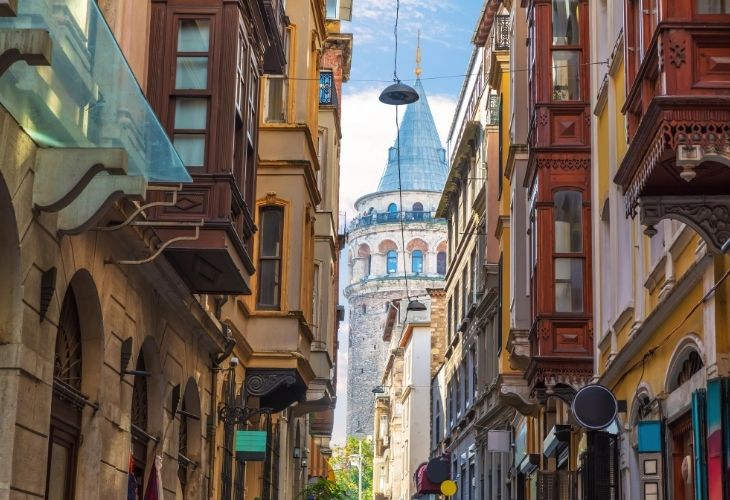
Pay a visit here, check out the food joints next to the monuments, and sit outside the café to watch the tourists move in and around the place. Go to the shops and see what they sell. Buy local things, talk to the shopkeeper, and pick his brains if you buy; he sure will entertain you.
| “It is discouraging to try to penetrate a mind like yours. You ought to get it out and dance on it. That would take some of the rigidity out of it.” ― Mark Twain |
Learn not to be too rigid while traveling. By being flexible with your itinerary, you’ll allow the experiences waiting to reveal themselves to you. Being overly rigid and planning meticulously, with a focus solely on execution, risks comparing your expectations unfavorably to reality.
One of the best places to be in Istanbul is inside the Kapalı Çarşı, the Grand Bazaar. It’s equally important to visit when you're in a good, jovial mood, so I took my time to align with the city’s vibrant energy before heading out. I put on comfortable shoes, grabbed an umbrella, and packed a large, empty bag, ready to be coaxed into emptying my wallet and filling the bag with treasures.
The easiest way to get to the Grand Bazaar from the Book and Paper Market is to exit via the Hakkakalar Kapısı, the Gate of the Engravers, and cross Çadırcılar Caddesi, the Street of the Tent-makers. This street is lined with booths run by tinsmiths and coppersmiths, and it’s almost always crowded with people and vehicles unloading goods. It’s a fascinating street—although no one makes tents there anymore, the booth owners will sell you old brass and iron objects or even craft you a fine tin stove or oven for your home.
Once you cross this street, you’ll pass through the Fesçılar Kapısı, the Gate of the Fez Makers, and enter the shallow, uphill end of the Kapalı Çarşı. If books remind you of your college days, you can visit Istanbul University, just a 5-10 minute walk from here.
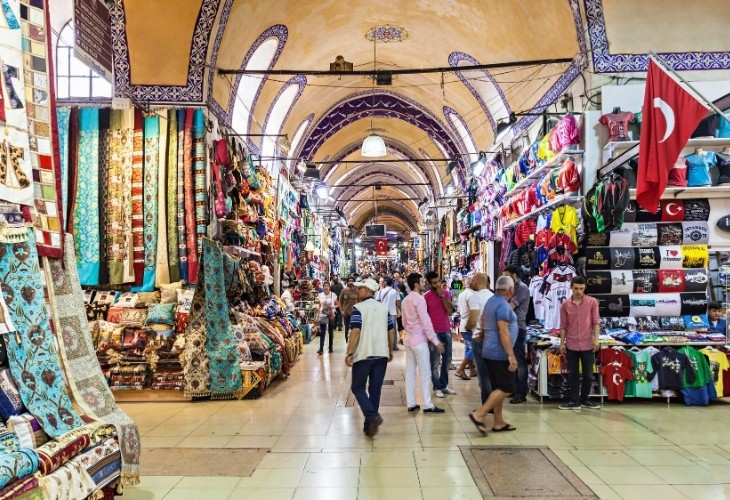
These ancient arcades of the Grand Bazaar are among the largest and oldest covered bazaars in the world. The Grand Bazaar spans 30,700 square meters, with over 60 streets and alleys and 4,000 shops. The original historical core of the bazaar, İç Bedesten, was completed by Mehmet the Conqueror in 1461. A “bedesten” refers to an indoor arcade with shops, and there are several areas within the bazaar that are referred to by this name.
Inside, under the vaulted ceilings, things became even more interesting. Everything mingled: the old, the new, the cheap, the extravagant. There were hills of spices and dried fruits—apricots, mulberries, mangos, grapefruits, pineapples, strawberries, ginger, cranberries—and bins of colorful tea in flavors like kiwi, lemon, apple, and orange. There were boxes of lokum (Turkish delight) flavored with fig-walnut and apricot, almond, and honey. There were baskets filled with pastries the color of pale roses and glass display cases with even more lokum, this time formed into logs, in more variations of pistachio flavors than I knew possible: grape pistachio, milk pistachio, honey pistachio.
Chatting and bargaining with the sellers, who are often fluent in more than one language, make the Grand Bazaar experience unique. Experience the Grand Bazaar at a leisurely pace; often, it feels like sensory overload, especially for first-timers when the vendors aggressively try to close a sale.
The difficulty that most travelers experience when visiting the bazaar is the absence of a clear map that shows its layout or the orientation of its streets. Unless you have an excellent guidebook, a GPS, or plenty of patience to ask at every turn which way is which and how to find your way out, it can be quite challenging.
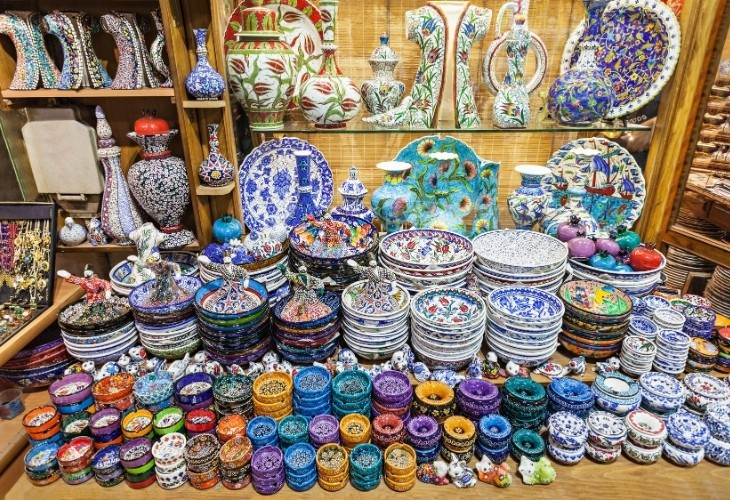
In the maze of covered streets, merchants called out as I passed, pools of light illuminating gold bangles, scarves, ceramics, and hookahs for sale. Many shops resembled mall boutiques, with electric signs, glass storefronts, and shelves of accessories and housewares. Outdoors, under tarps and awnings, entire streets were lined with stalls selling cookware and household sundries (brooms, feather dusters, honey wands). Some items, whether an economy-size pack of sponges or a wooden chair, dangled like piñatas from ropes above shoppers' heads.
Opening days: The Grand Bazaar is closed on Sundays and Turkish public holidays.
Cihangir: a neighbourhood that’s home to writers and artists.“It was in Cihangir that I first learned Istanbul was not an anonymous multitude of walled-in lives - a jungle of apartments where no one knew who was dead or who was celebrating what - but an archipelago of neighbourhoods in which everyone knew each other.” ― Orhan Pamuk, Istanbul: Memories and the City |
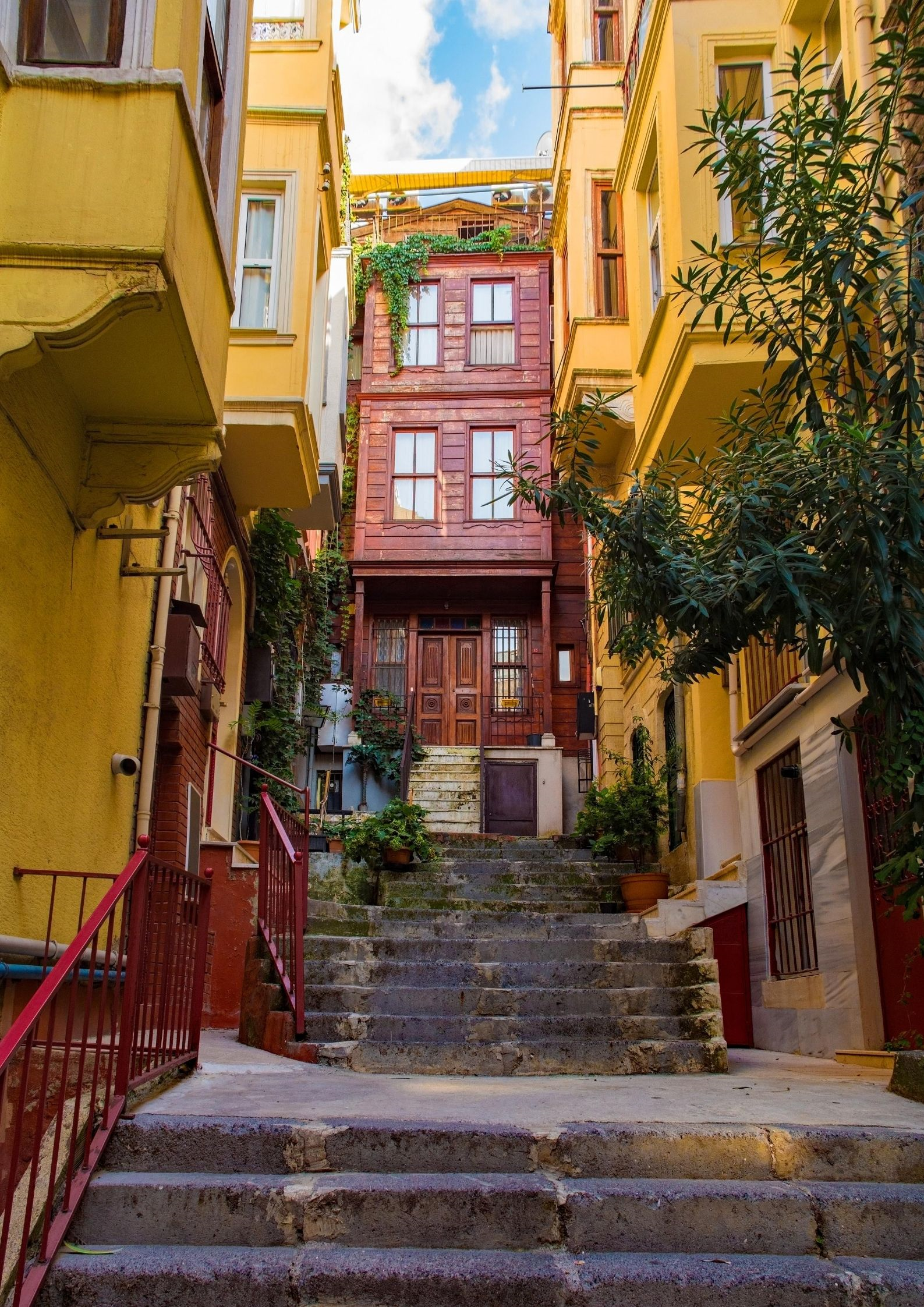
Only a few Istanbul neighborhoods today constitute the surviving historic quarters of the old city, even though they have lost many of the original characteristics that made them truly old Istanbul neighborhoods. No doubt, these characteristics reflected the spirit of Istanbul’s past, a past that has already faded away. What remains today, for me, is the soundness of an idea: that the story of each such neighborhood may well be the story of cosmopolitan Istanbul, a summary of the changes it has undergone and the times it has lived through.
Istanbul's Beyoğlu district is home to artists, writers, actors, and ex-pats, drawn by the area's culture and equally lofty Bosphorus views (Orhan Pamuk's office is here).
The bohemian lifestyle is palpable amid the neighborhood’s narrow streets, covered in greenery, eclectic street cafés, and charming clothes and food boutiques. The area is one of the prettiest in the city and known for its café culture. Turkish cuisine is best experienced at a meyhane, a kind of taverna. An array of cold starters, or meze, is brought to you on a platter (with an emphasis on vegetables cooked in olive oil and seafood). Hot starters, with a choice of grilled calamari, shrimp, or octopus, are served next, followed by a selection of fresh fish. All of this is served with rakı, the anise-flavored distilled grape spirit that is Turkey's national tipple.
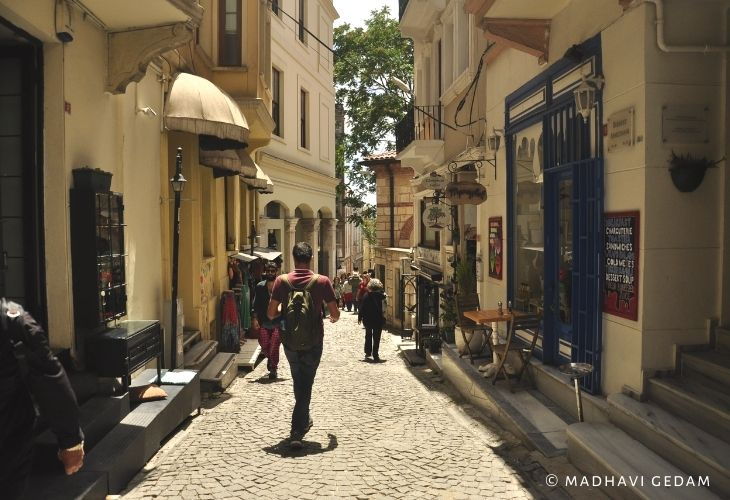
In contemporary Istanbul, Cihangir positions itself, albeit a bit commercialized, but nostalgic for a past cosmopolitan urban tableau. As I had extensively read Istanbul: Then and Now and being a massive fan of Mr Pamuk, I went up the hill to the Museum of Innocence - a showcase of what we try to keep and eventually lose. Ever been a trip down memory lane even when you don’t have the memories you’re experiencing? Exactly. Leaving the museum and walking downhill to the dazzling Bosporus was like re-entry into the living after a brief limbo.
Eminönü |
Eminönü is home to one of the best spice bazaars you’ll find in the world. Despite bearing the brunt of two devastating fires, it remains the second-largest covered bazaar in Istanbul. While the Grand Bazaar is the largest and has a raw, oriental feel, the Spice Bazaar is more delectable and architecturally impressive. In the mid-18th century, the market was called Misir Çarşisi, where goods from Egypt were sold. Later, as spices became more prominent, it came to be known as the Spice Bazaar.
Eminönü is also one of the city’s busiest ferry stops, and each stop offers its own colorful harbor scenes. During the day, locals fish and sell everything imaginable on the bridge between Eminönü and Beyoğlu. Below, there are restaurants and cafés where you can enjoy Turkish coffee and chestnuts while watching the ferries approach the nearby docks. Nearby, the clock towers of the Sirkeci Terminal, once the final stop on the Orient Express, rise beside an empty train car. The domes of vast mosques gleam in the sunlight.
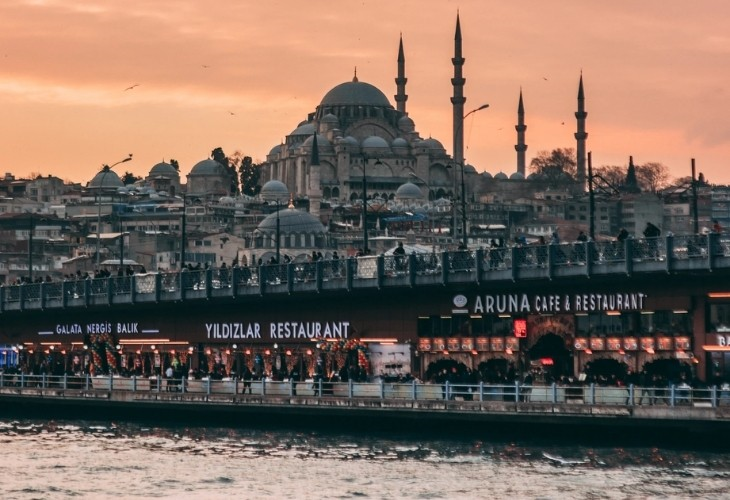
Walking over the bridge at sunset from Eminönü to Beyoğlu, you will find the scenery rapidly changing. From men selling flowers from pushcarts and tents, aging shoe shiners sitting behind their brass boxes under trees and umbrellas, and yellow taxis idling at the curb slowly transitioning into where the Galata Tower stands. Seagulls circle the tower against a soft red-pink sky, offering a spectacular view of the peninsula. The narrow streets of Galata are lined with trendy eateries serving local and regional food. The scent of apple tobacco wafts out of the nargile cafes under the bridge crowded with young travelers from various nationalities.
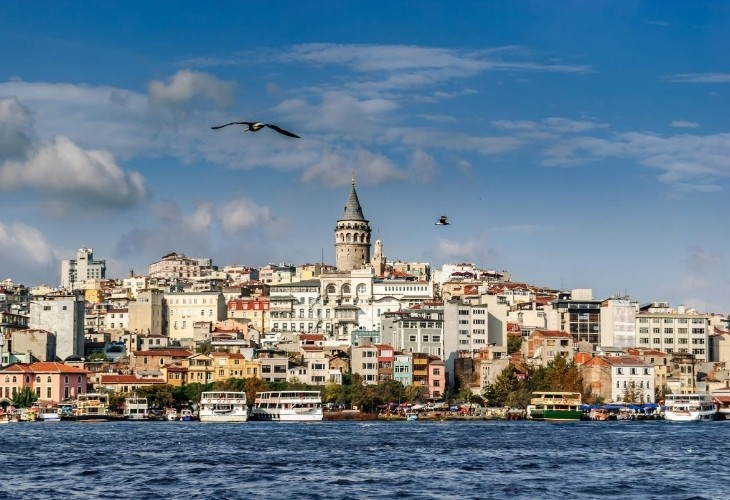
| It is Galata Tower where Hezârfen Ahmed Çelebi flew from. He is the first man ever to fly using wings, crossed the Bosporus and landed on Üsküdar. |
Quite noticeable in Istanbul is how the city blends different elements. It may seem a bit confusing that the city is both modern and old-fashioned at the same time. The environment changes quickly, shifting from one area to another. This is primarily because Istanbul is built on two continents—Europe and Asia. A mix of influences is inevitable. Some places in Istanbul transport you back to the Ottoman Empire's glory days while walking through the culturally rich streets fills you with a sense of pleasure.
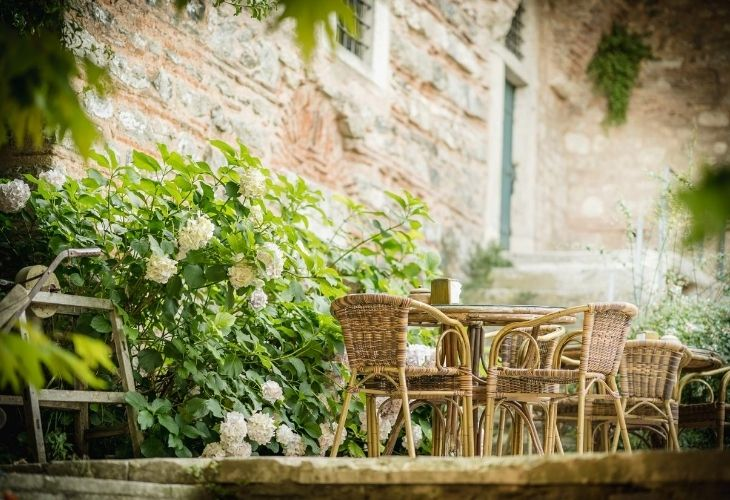 | 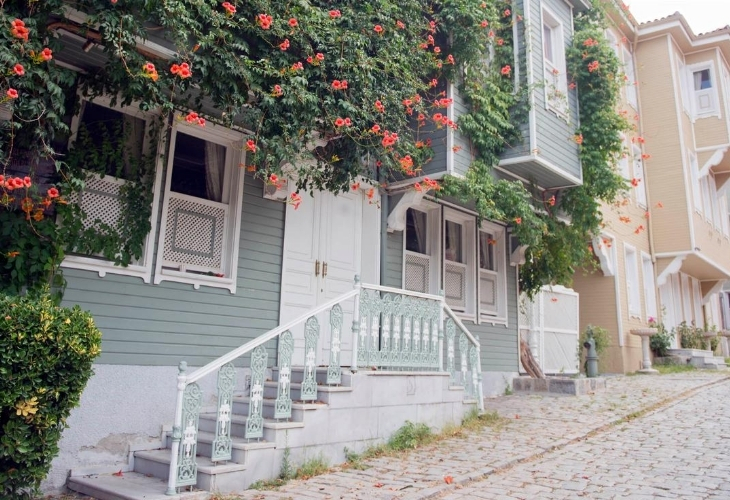 |
Street photography is also a visible aspect of life in Istanbul, with tourists and locals alike indulging in capturing moments.
Ones to Visit |
Turkey boasts immense beauty and a remarkable history of legends who left an indelible mark on the country. Istanbul has been inhabited by civilization since the 6th century BC. Byzantine, Persians, Alexander the Great, Roman, the Ottoman Empires, and many tribes and nomads on the fringes of them have brought about the existence of ancient structures, historic monuments, royal palaces, museums, etc. Each of these edifices exhibits distinguishing features from their different makers, yet they stand together in their diversity, showing Istanbul’s acceptance and tolerance for societies of all faiths.
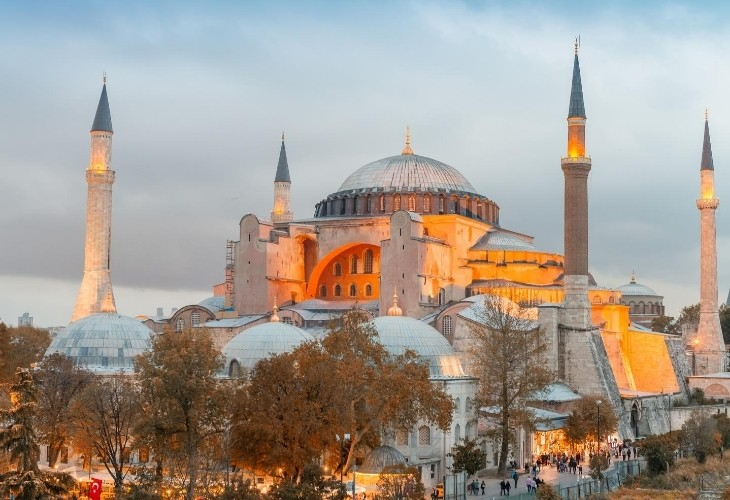 | 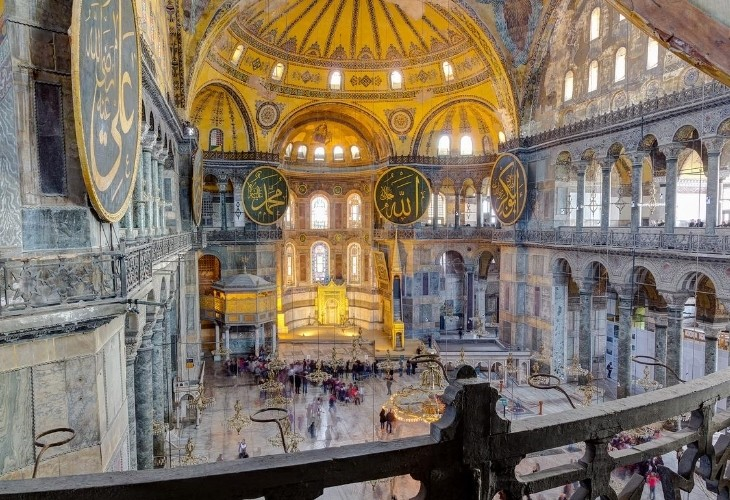 |
For starters, Aya Sofya, formerly known as Hagia Sophia, although now converted into a museum, had been Istanbul’s most treasured mosque since 1453. It’s pretty obvious why some call it the eighth wonder of the world, being such a massive architecture of masterful engineering. The mosque has a magisterial interior with ceilings covered in mosaic. It is undoubtedly a jaw-dropping sight for all the tourists that step on the not-so-humble abode. In its courtyard, an inscription translates to, “Wash your sins and not only your face.” It was built with the dedication to impress, consisting of marble from all over the Turkish empire back in time.
| “Oh! What treasures you hold Topkapi!” |
Entering one of Istanbul’s marvels, Topkapi Palace is an experience that is not to be rushed. This is mainly because it takes half a day to appreciate the place fully. As an elite, highly decorated palace, it has been home to the Ottoman Empire's sultans for centuries. Today, at least for me, it remains one of the most dazzling places one could ever hope to see in their lifetime. Within its gold-embroidered walls lie Islamic relics held in the highest regard. The entire structure itself is a masterpiece of Islamic art.
Don't miss the Third Court if you love fine, invaluable things or want to marvel at the Holy artifacts. The Dormitory of the Expeditionary Force holds imperial robes, talismanic shirts, kaftans, and uniforms worked in silver and gold thread.
Did you know that the Chamber of Holy Relics houses relics of the Prophet Muhammad, including his mantle, sword, and bow? These were obtained when Selim I conquered the Mamlūk dynasty in Egypt in 1517, passing the caliphate to the Ottomans. As incredible as that is, Topkapi also displays the pot of Abraham, the staff of Moses, and the sword of David, along with scrolls that may have belonged to John the Baptist and a turban said to have belonged to Joseph, son of Jacob.
The Treasury protects an unbelievable collection of items decorated with gold, silver, rubies, emeralds, jade, pearls, and diamonds. The most famous piece is the Topkapi Dagger, which became the subject of intrigue in the 1964 caper film Topkapi.
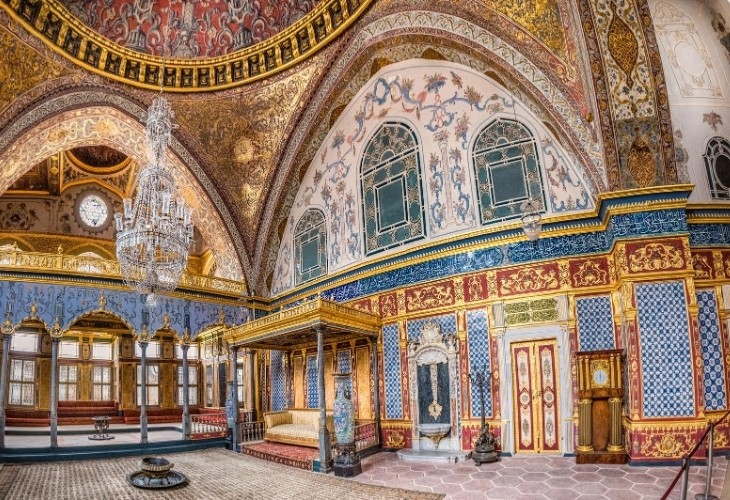
Another delightful sight where one closely interacts with Istanbul’s locals is the Grand Bazaar. Crowned one of the world's largest markets, the Grand Bazaar hosts more than a quarter-million tourists daily due to its striking specialty. With more than 5,000 stores and 11 gates for entrance, the place is full of Turkish tradition. Exceptional spices, succulent fruits and vegetables, luxurious carpets, eccentric Turkish lamps, and novel Turkish scents are available for purchase in Turkey’s famous Grand Bazaar. Additionally, Istanbul’s fascinating local skill of making ceramics and tiles compels many tourists to appreciate its excellence. They feel compelled to make a purchase and take these handicrafts back home with them.
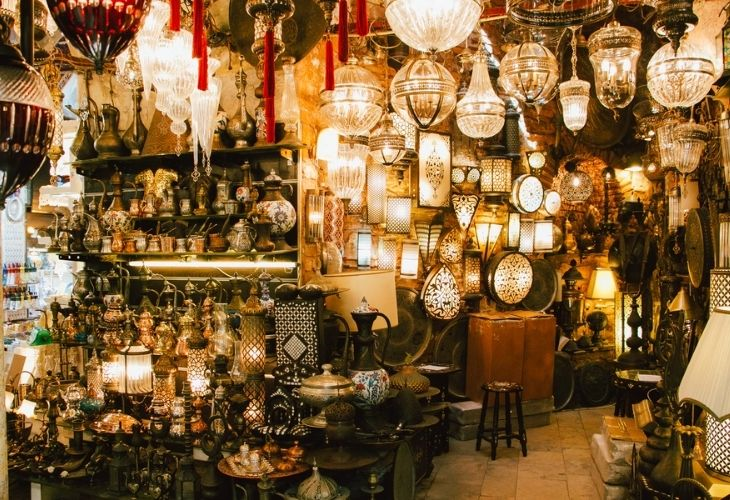
.
Besides the grandeur of Istanbul’s most opulent tourist sites, the city also offers a wealth of local attractions. Sultanahmet Square, for instance, is a hub of activity and entertainment. Many visitors to Istanbul spend much time exploring the square, drawn by its vast expanse. Sultanahmet Square is also conveniently located near other top tourist sites, making it an ideal starting point for exploration.
From a plethora of Mosques, Museums, Palaces, and timeless bazaars, Istanbul thrives unapologetically for its culinary mastery, inspiring millions to come and partake of food unparallel in the world of gastronomy.
The Luscious Food |
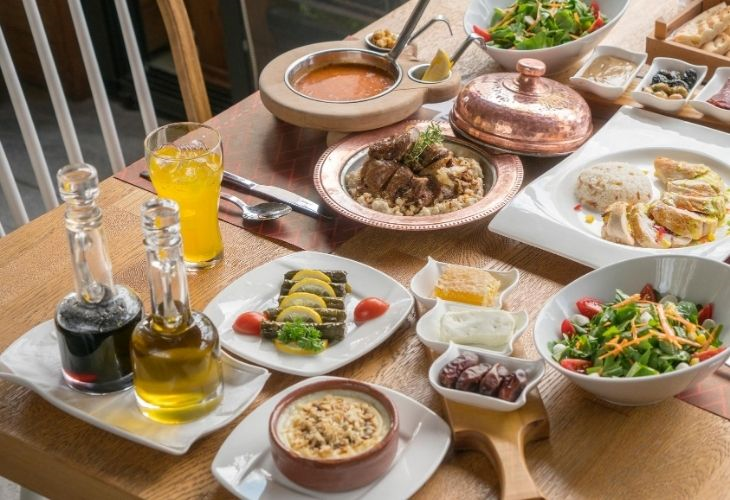
You might have heard the term “Turkish Cuisine.” That’s right—Turkey’s food didn’t become so renowned for no reason. It has earned its world-famous status because nothing compares to its distinct class. While dishes like Turkish Breakfast can be found in fancy restaurants in Istanbul, the delicious street food captures the attention of the broader tourist masses.
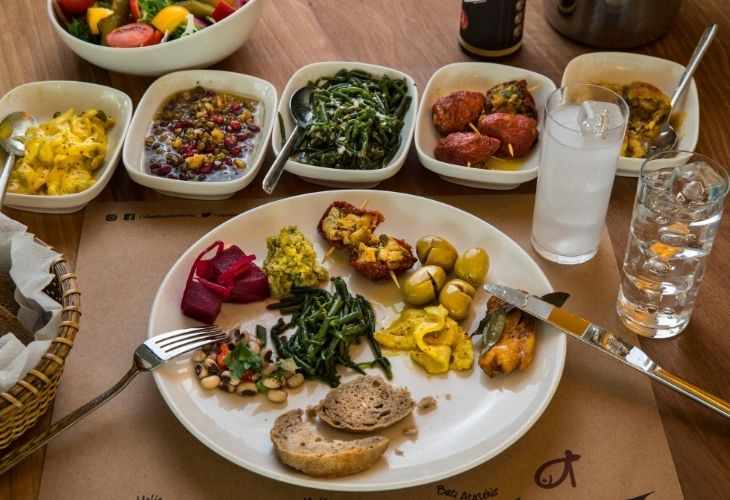 | 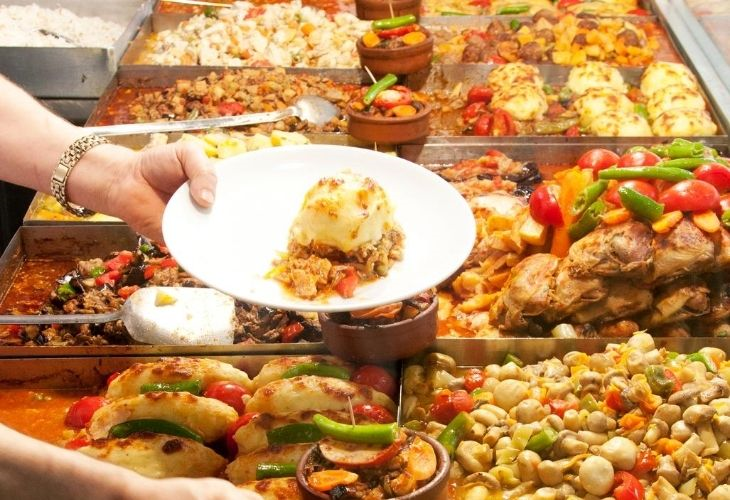 |
For starters, Döner Kebab is well-known throughout Istanbul. It is served with either chicken or beef, stacked in bread with vegetables. You can find a Döner Kebab stall every 20 meters in Istanbul, but right alongside the Grand Bazaar is Dönerci Şahin Usta, one of the best Döner Kebab makers around. It’s a bit pricier than your average Döner, but it’s worth every single penny.
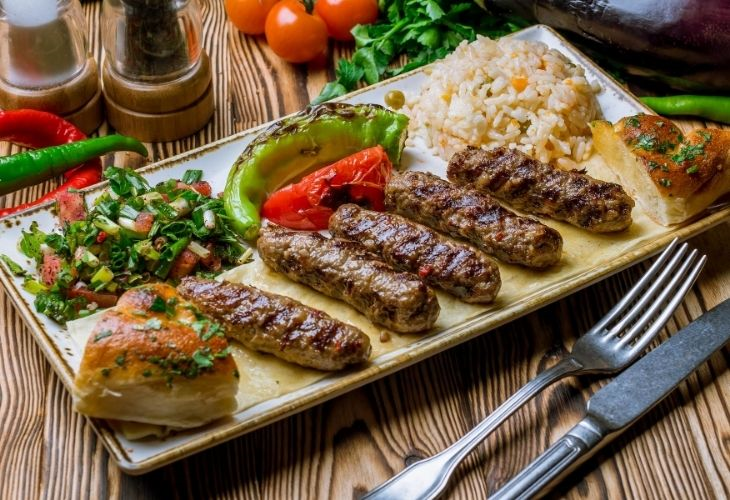 |  |
Moreover, Kokorec and Midye Dolma are Turkish snacks found on Istiklal Street. A sweet called Baklava is one of Istanbul’s finest. It is found almost everywhere, but for the best Baklava in Istanbul, one should only need to go to Hafiz Mustafa near Sultanahmet.
Only in Istanbul |
Given enough time in a place, a few unique occurrences are sure to surprise the traveler.
One such fascination can be found in Gülhane Park in Istanbul. During a visit, the high-pitched chirping of numerous birds is sure to be heard. These birds are ring-necked parakeets native to Asia and Africa. The question is, how did they end up in Istanbul? It is believed that perhaps a smuggler had a truck accident, and the birds escaped—though who knows? Since the birds are highly talkative, you might be better off asking the parakeets.
Another unique feature of Istanbul is the Hagia Sophia. There, a Viking named Hafdan etched a message onto a railing that reads, "Hafdan was here in 247."
Bidding Adieu only to meet again. |
Istanbul, a city brimming with friendly people, astonishing sights, great food, and a glimpse of modern-day excellence, is rapidly developing and becoming larger than life. Therefore, the art of traveling in Istanbul requires a slow and patient approach.
These six days spent in Istanbul serve as a reminder of how far the world has come compared to where it was decades ago. Istanbul, in particular, is one of the world’s most beautiful cities and has become an ambitious destination for the right type of tourist.
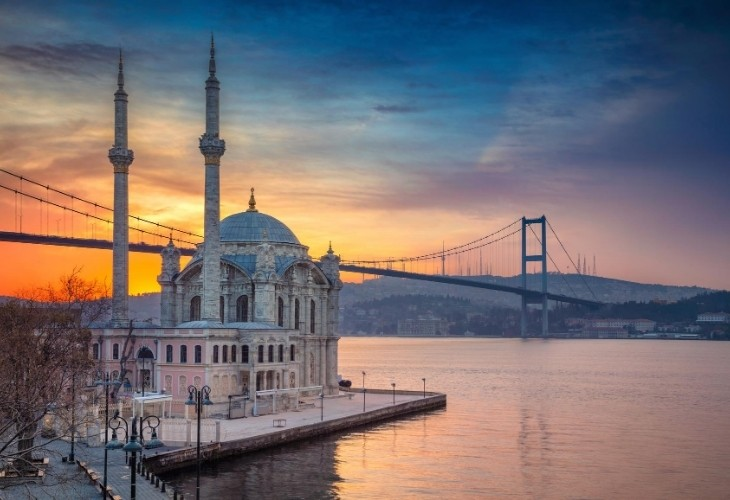
| Tags ~ things to do in Istanbul, places to visit in Istanbul, top things to do in Istanbul, best places to visit in Istanbul, Istanbul sightseeing, Istanbul information, Istanbul Review, Istanbul Culture History |
Along the Bosphorus – read next.
.png)

